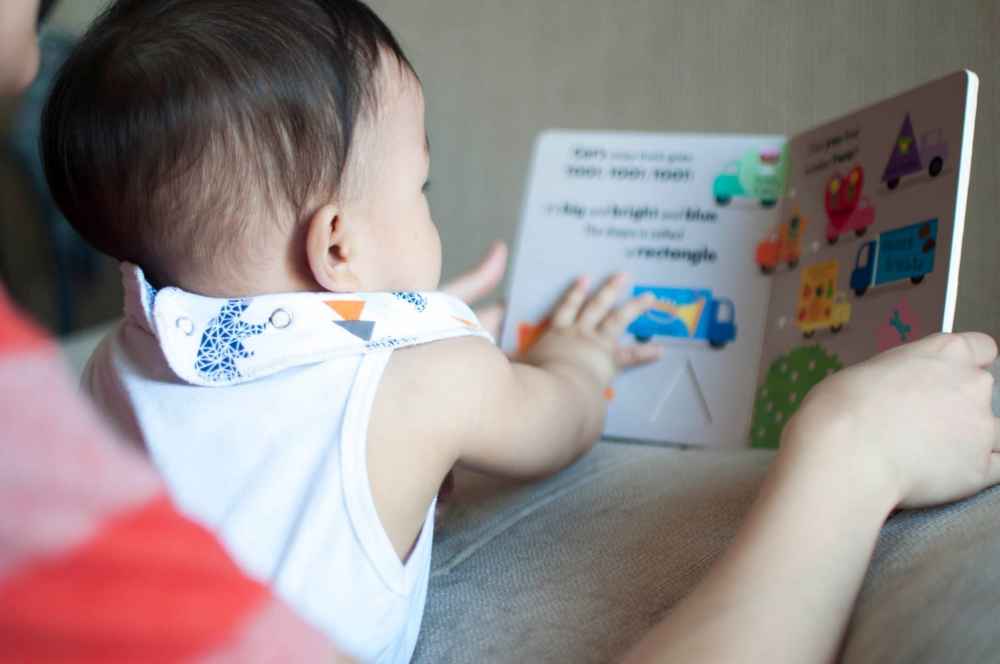At story time, many parents find themselves reaching for yet another book they have already read numerous times to their child – something which helps with development but sometimes becomes tiresome and boring for both parties involved. How can storytime stay exciting once again?
Here are five strategies to make reading enjoyable: For both of you!
- Provide Choices
Each morning, I select five or six books for reading during the day and stack them neatly on my lap. At bedtime, when it’s time for us to read one aloud together, I take her off my lap and grab two from our pile; placing these in front of her face.
When I ask which book she’d like me to read, she usually raises her hand and touches one – we have done this so often that she knows exactly which ones are her favorites! If not, if her gaze settles on one then that one I go towards. Sometimes I switch them around so that I make sure that the right choice was picked without just picking whatever happened to be close by first before finally selecting and reading that which her eye stays most intently upon.
Giving your baby some freedom helps show that she’s an active participant and not simply listening. Additionally, this lets them explore touch sensation and begin understanding cause-and-effect relationships (much like banging on a drum or shaking a shaker), potentially encouraging grasping as your child develops her fine motor skills.
Related Article: 30+ essential board books to introduce baby to reading during their first year
- Let Your Baby Turn Pages
It is essential for babies and children to utilize all five senses when learning. Have you seen how often little ones play “this goes in my mouth?” By encouraging your infant or toddler to touch and turn pages themselves, they are developing “pre-literacy skills”, which they will further refine during preschool and pre-k. Not only are they building their grasp strength by turning pages independently but they are also learning valuable information, like which direction books open or the fact that English text runs left-to-right.
Studies have proven the power of music for children’s learning. By adding songs while you read to your baby, adding new layers of meaning with every repetition. When reading Leo Lionni’s Little Blue and Yellow Yellow book you could sing “Ring Around the Rosie”, or create silly “days of week” song while reading Eric Carle’s The Very Hungry Caterpillar story “Books: The Musical! Plus it adds fun for both of you.
Add gentle dance moves to make storytime even more engaging! Movements incorporating “cross-body patterning”, where opposite parts or parts of the body move simultaneously, help stimulate both sides of baby’s brain. While singing “Ring Around the Rosie”, lift your child’s left arm and touch it to their right foot, before switching sides a second time (lift left arm over right foot, etc). And it is so adorable to watch their adorable dancing (even if it means you having to lead!). Plus it makes storytime that much sweeter!
- Explore silly voices
Now is the time to experiment with using humorous animal impersonations! Stories such as Goldilocks and the Three Bears offer plenty of opportunity for vocal imitations; using silly voice effects or noise effects in any book storytime will add fun.
Deborah Diesen’s The Pout Pout Fish remains one of my daughter and my favorites; however, after reading it countless times it began losing some of its appeal – until French Pout Pout Fish became Kiss Kiss Fish complete with over the top Pepe Le Pew-esque accenting! After this twist came true both she and I couldn’t stop laughing together at how funny and ridiculous that became.
Related Article: When to Begin Reading to Baby: A Look at the Research
- Include Food As an educator, I usually introduce young learners to new vocabulary by showing them objects first before providing the names for it. In a similar vein, having your baby experience food while reading about it is an excellent way of creating associations and beginning neural pathways development.
Next time you serve up pea puree, why not read Amy Krouse Rosenthal’s Little Pea? Terry Border’s Peanut Butter and Cupcake can help your child learn to swallow solid foods through repetition of language that facilitates digestion. Even if your child hasn’t started solids yet, reading Ruth Krauss’ The Carrot Seed may introduce her to something she can touch, see, hear and smell while showing them an image of carrot that they can explore visually, tactilely and scentually!
Most of us associate reading stories at bedtime, but an engaging storytime session can take place any time and anywhere when two individuals get together. Explore changing it up a little to see if either experience changes.
